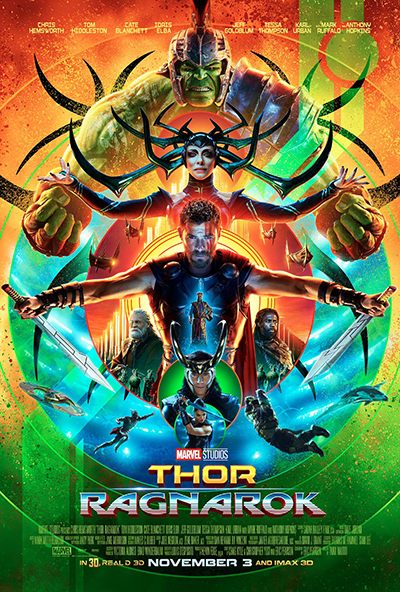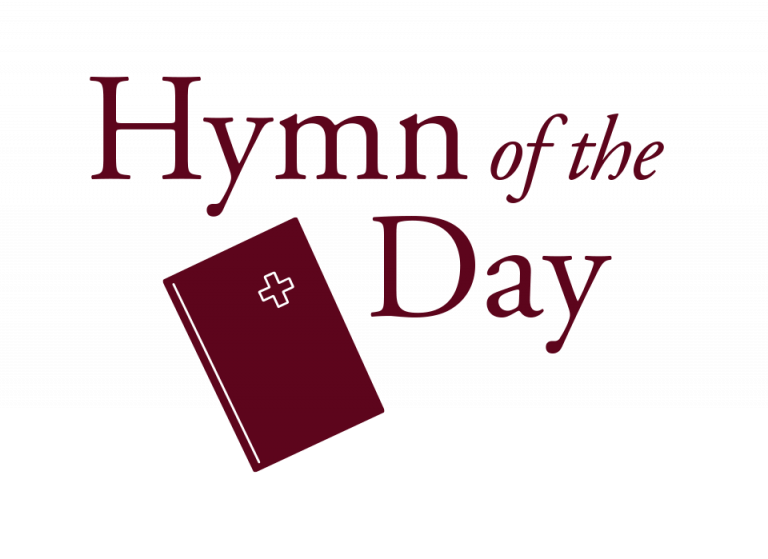Thor: Ragnarok — Chuckling at the Apocalypse
 by Ted Giese
by Ted Giese
With Thor: Ragnarok, the third film in the Thor franchise within the Marvel Cinematic Universe, the series receives a Guardians of the Galaxy-style makeover with comedy director Taika Waititi at the helm. As a result this new film feels dramatically different compared to the first Thor film, directed by Kenneth Branagh who brought a decidedly Shakespearian feel to the franchise. And while Shakespeare is known for both tragedies and comedies, Thor: Ragnarok is no Shakespearian comedy.
The story very loosely revolves around the Norse mythological prophesy of Ragnarok—a final battle between the Norse gods and the giants, and other evil pagan gods in the Norse pantheon who apocalyptically destroy their homeland Asgard and all of creation before its rebirth. (Perfect topic for a comedy right?)
The story begins during a conversation with a giant fire demon, Surtur, who for reasons of revenge is bent on destroying Asgard. In their conversation Thor discovers that his father Odin, the Allfather god, is not actually on Asgard. Instead, Thor’s brother Loki, the trickster god, has been impersonating their father. Eventually the two brothers find Odin in Norway. There they discover they have an older sister they didn’t know about, Hela, the goddess of death, who was imprisoned and will only escape if Odin dies—which he does promptly. Hela confronts Thor and Loki, and she destroys Thor’s hammer Mjolnir. From there the story breaks into two narratives eventually coming back together for the film’s finale.
In the one narrative Hela invades Asgard claiming it as her own and demanding to rule as Queen while plotting to conquer the whole universe. In this part of the film the comedy falls flat.
In the other narrative Thor and Loki, who failed to stop Hela from making it to Asgard through the Rainbow Bifröst Bridge, are waylaid on the garbage-heap-of-a-planet Sakaar ruled by the Grandmaster, who is mainly interested in gladiatorial sports and frivolous living. Without his hammer and imprisoned in the ranks of the gladiators Thor must find a way out of his predicament and race against time to save the people of Asgard. Along the way he collects three powerful helpers: the Incredible Hulk/Bruce Banner who was likewise trapped on Sakaar and fights as the Grandmaster’s top gladiatorial champion; one of the last surviving Asgardian Valkyrie; and his brother Loki. In the end they must all battle Hela, her giant wolf Fenris, and her army of the undead.
In Norse mythology, Hela—actually called Hel—is the daughter of Loki and her giant wolf Fenris is her brother, another child of Loki. Hel is similar to the Greek mythological figure Hades, god of the underworld. Both Hel and Hades rule similar realms and each shares their name with the realm over which they rule. The repurposing of these Norse mythological characters in Marvel comics, and now in Thor: Ragnarok, is simply an excuse for telling stories.
As these films progress, and the Marvel Universe meta-narrative continues unfolding, the fidelity of these characters to their mythological source material evaporates rapidly. Viewers can’t really expect to come away from a film like Thor: Ragnarok knowing any more about Norse mythology then they did going in: this is not a Norse mythology apologetic. No one is defending a Norse mythological worldview and nor is anyone attempting to persuasively teach anyone anything about Norse mythology as a religion.
The first two Thor films revolved around Thor being forced to confront his arrogance and subsequently grow in humility. He had to learn how to function without his powers and then how to use them with humility not for vain glory but instead in the service of others, for the common good. Thor: Ragnarok continues in this vein and shows the fruits of Thor’s character development. This part of the narrative in this film focuses on Thor’s friendship with the Hulk/Bruce Banner and his reconciliation with his brother Loki. In this way the movie portrays themes of friendship, forgiveness, and valour in serving others. In this part of the film the comedy works better.
Comedy is often hard to write about because it is so subjective. Much depends on the viewer’s frame of mind. But there are times when a film’s topic doesn’t lend itself to comedy. The Thor films have always included comedic elements; some of its best comedic moments are at Thor’s expense. And while Asgard, its people, and the whole of Norse mythology world are fictional, the apocalyptic destruction of Thor’s home seems like a poor thing to make light of. Christians may want to think in terms of the appropriateness of mixing the “End of the World” with comedy. Ragnarok is of course not a prophecy about the world as we know it ending, but Christians do have Scriptural promises about the Last Day and the return of Christ Jesus. Those promises are not something for Christians to fear nor is the topic something to be made light of.
Christians may want to think in terms of the appropriateness of mixing the “End of the World” with comedy.
Of course, Thor: Ragnarok is hardly the first film to make light of the apocalyptic destruction of everything. It may be that films like 2013’s This Is the End and 2008’s Disaster Movie aren’t very funny simply because the topic doesn’t lend itself to humour. Some people may have busted a gut at those films, but for Christians the idea of having a laugh about something in which they place such hope and comfort seems crass and inappropriate.
Even so, this is not the initial reaction to watching Thor: Ragnarok. The film is fun and some of the humour lands, leading viewers to laugh and chuckle. The caution comes upon reflection on the dissonance between the film’s glib comedy and its more serious apocalyptic themes.
The film even touches on the subject of resurrection. In doing so, it follows the approach of many recent films in making resurrection something initiated by evil characters, and leaving the resurrected mainly mindless zombies or an evil hoard. Hela in Thor: Ragnarok resurrects long-dead Asgardian warriors to fight for her, but as in many other cases, like this year’s failed Tom Cruise film The Mummy, Hela’s warriors are nothing more the CGI evil brutes lacking substance or character. This makes some sense since they are fighting for the side of evil and are generally only there to be defeated by the heroes. Nevertheless, it is odd that in popular culture recently resurrection is predominantly depicted as evil, bad, and ugly while in the Church it is good, virtuous, and beautiful. Is it intentional or is it lazy writing that keeps recycling this same tired trope?
It is odd that in popular culture recently resurrection is predominantly depicted as evil, bad, and ugly while in the Church it is good, virtuous, and beautiful. Is it intentional or is it lazy writing that keeps recycling this same tired trope?
In the long run when placed next to the earlier Thor films, Ragnarok feels shallow and cheap both in storytelling and production. Compared to the two Guardians of the Galaxy films it comes across as derivative. In the greater Marvel Universe the film seems to serve as a bridge between the epic and the comedic—a bridge all the more necessary as we move closer to 2018’s Avengers: Infinity War and its sequel, films which will be populated with almost every Marvel character, both epic and comedic. Even so, when considering the story Thor: Ragnarok attempts to tell, the film would have been better served with an epic rather than comedic treatment.
Like cotton candy, viewers will enjoy this film in the moment. It’s a fun movie, but is “fun” everything? One wonders whether these characters deserve more than fun as their trilogy comes to its conclusion.
———————
Rev. Ted Giese is lead pastor of Mount Olive Lutheran Church (Regina, Saskatchewan). He is a contributor to Reformation Rush Hour on KFUO AM Radio, The Canadian Lutheran, and the LCMS Reporter, as well as movie reviewer for the “Issues, Etc.” radio program. Follow him on Twitter @RevTedGiese.





